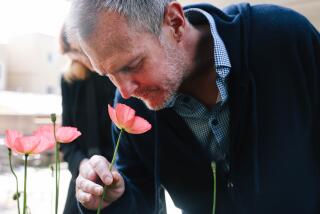California pays $2.25 million to family of brain-damaged inmate
California prisons have paid $2.25 million to the family of an inmate left severely brain-damaged after she tried to hang herself in the mental health unit of the Ventura Youth Correctional Facility in Camarillo.
The family’s lawsuit alleged that a guard violated the prison’s suicide prevention policy by allowing then-16-year-old Shanelle Crawford to cover the window in the door of her cell in May 2008, making it impossible for staff to see inside.
In a 2009 deposition, the male guard said he occasionally let girls cover their windows for “a minute or two” while they used the toilet or undressed for the shower.
The extent of Crawford’s brain trauma suggested that she could have been hanging for eight to 10 minutes before guards forced their way into the cell and freed her from the noose she’d fashioned from a bedsheet, according to a neurologist hired by the family’s lawyer, Ronald Kaye.
Robert Crawford, the girl’s father, said he learned of the suicide attempt when an inmate advocacy group tracked him down in Texas a few days later. He didn’t grasp how desperate his daughter’s plight was until he reached the hospital in California and the doctor gave him a stark choice: “I could pull the plug or she would live as a vegetable for the rest of her life,” Crawford said.
Like many of the wards in Shanelle Crawford’s wing of the Ventura facility, she was profoundly troubled. She suffered from major depression, had been a victim of sexual abuse and had made a serious suicide attempt two years earlier, court records show.
“This was probably the most suicide-prone population on Earth,” Kaye said.
The policy prohibiting covered windows had been instituted after the successful suicide of an 18-year-old at a Stockton youth prison in 2005. Nearly 40 minutes elapsed between the time guards noticed his window was covered and the time they opened the door to find him hanging.
Now if guards see a window covered they are required to intervene immediately by getting the inmate to take down the obstruction, or by going into the cell if the inmate refuses to cooperate or doesn’t respond.
Prison spokesman Bill Sessa said he didn’t know whether the guard had been disciplined after Crawford’s suicide attempt. But even if he was, “that would be a personnel action and most of those are considered confidential,” Sessa said.
Administrators are “looking to see if the policy needs to be changed or clarified in any way,” Sessa said.
Corrections officers have repeatedly failed to follow the policy since its implementation. A 2006 inspection of a youth facility in Chino found 11 cells with covered windows and a follow-up inspection found 22, including one cell with “a knotted-towel rope suspended from the light fixture,” according to a 2007 prison inspector general’s report.
Just before her suicide attempt, Crawford had argued with a corrections officer who told her to get off the phone with a family member because it was time for her shower. Eventually, the officer “physically hung up the phone, greatly upsetting Shanelle,” court records show.
Now 20, Crawford lives with her father in Austin, Texas. She remains bed-ridden, can’t use her hands and struggles to respond to spoken questions, said Codessa Davis, a family friend who helps care for her.
The money, minus $867,935 in attorney’s fees, will go into a trust to help cover her medical costs, according to the settlement order.
More to Read
Start your day right
Sign up for Essential California for news, features and recommendations from the L.A. Times and beyond in your inbox six days a week.
You may occasionally receive promotional content from the Los Angeles Times.







